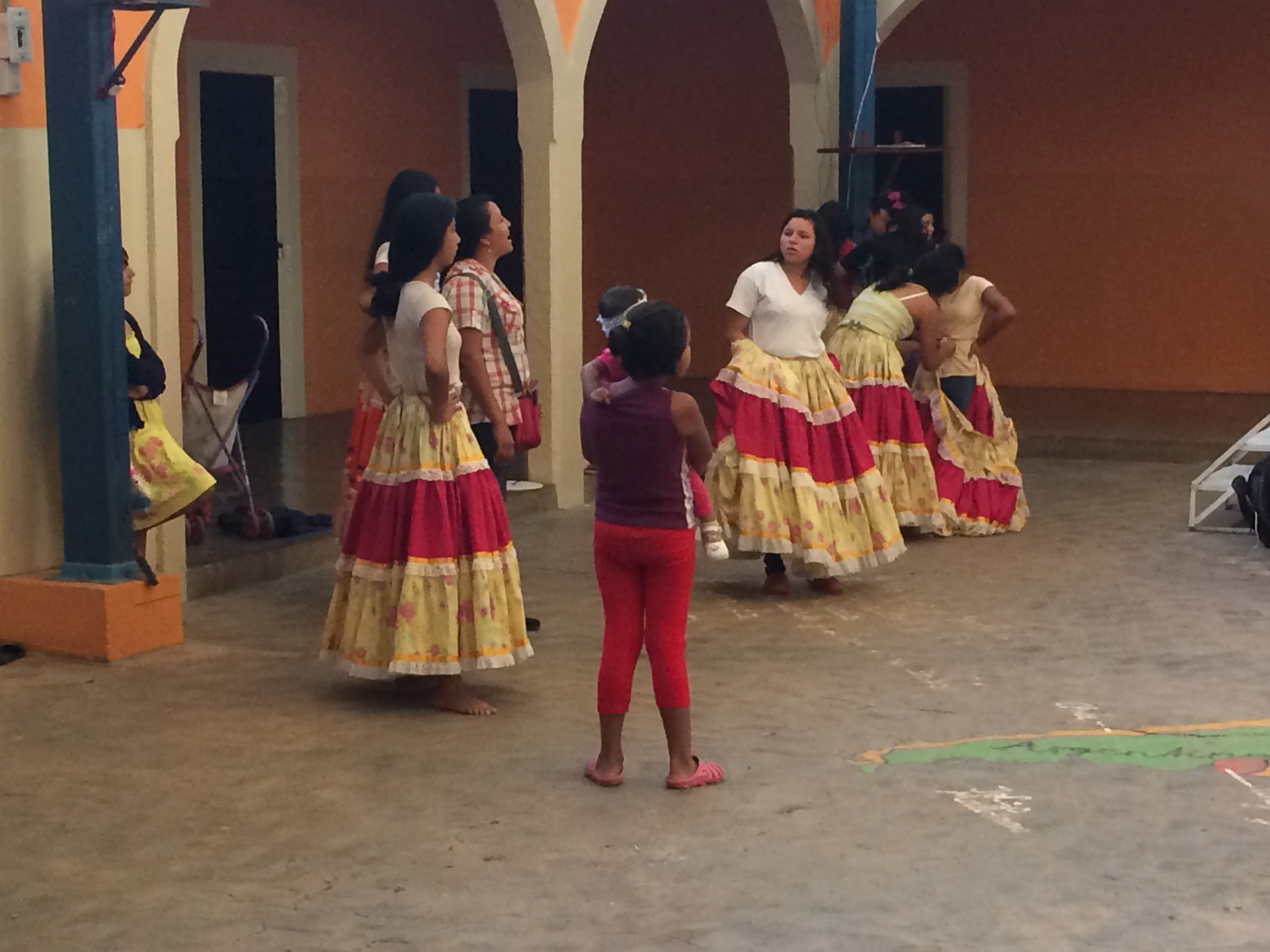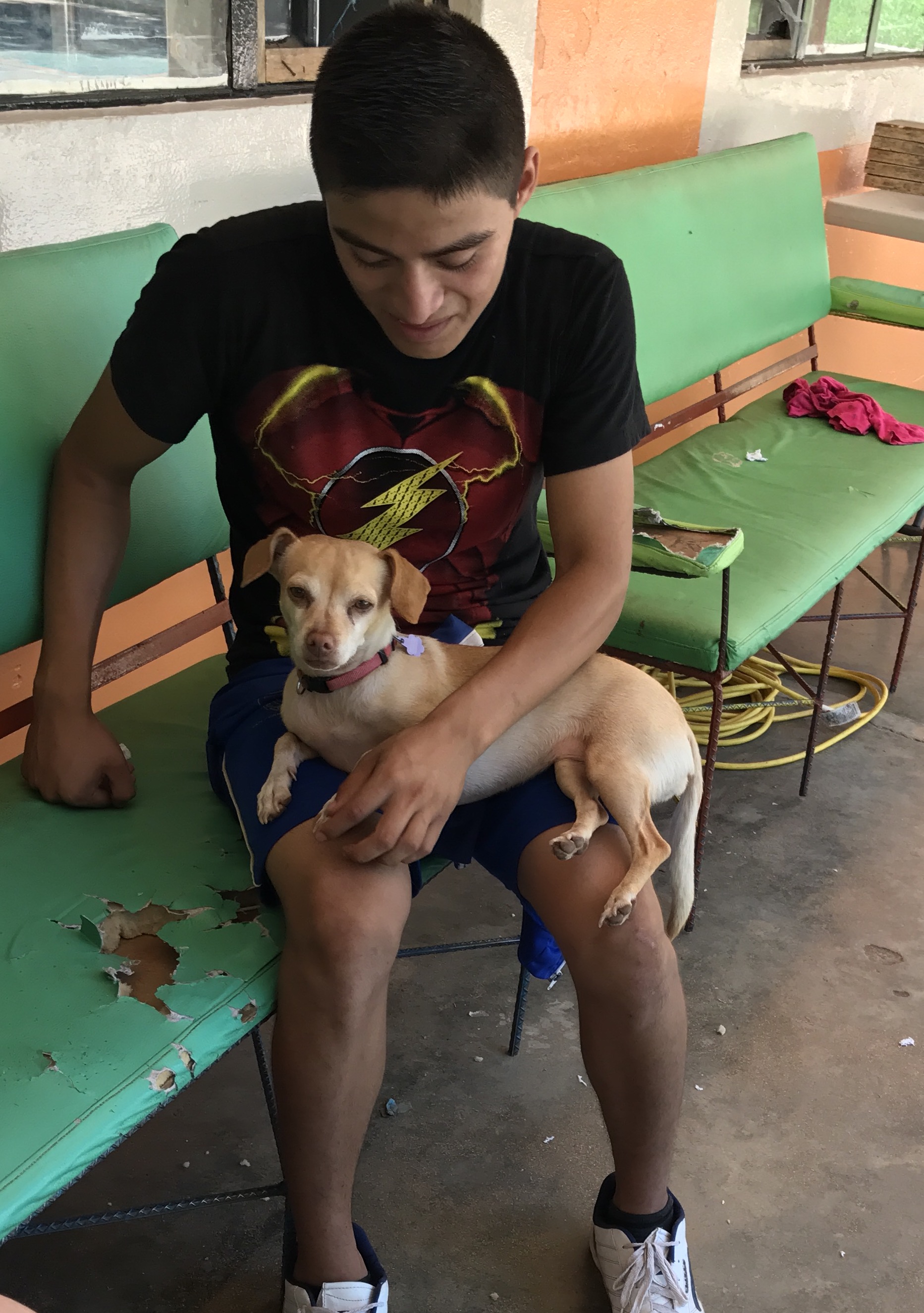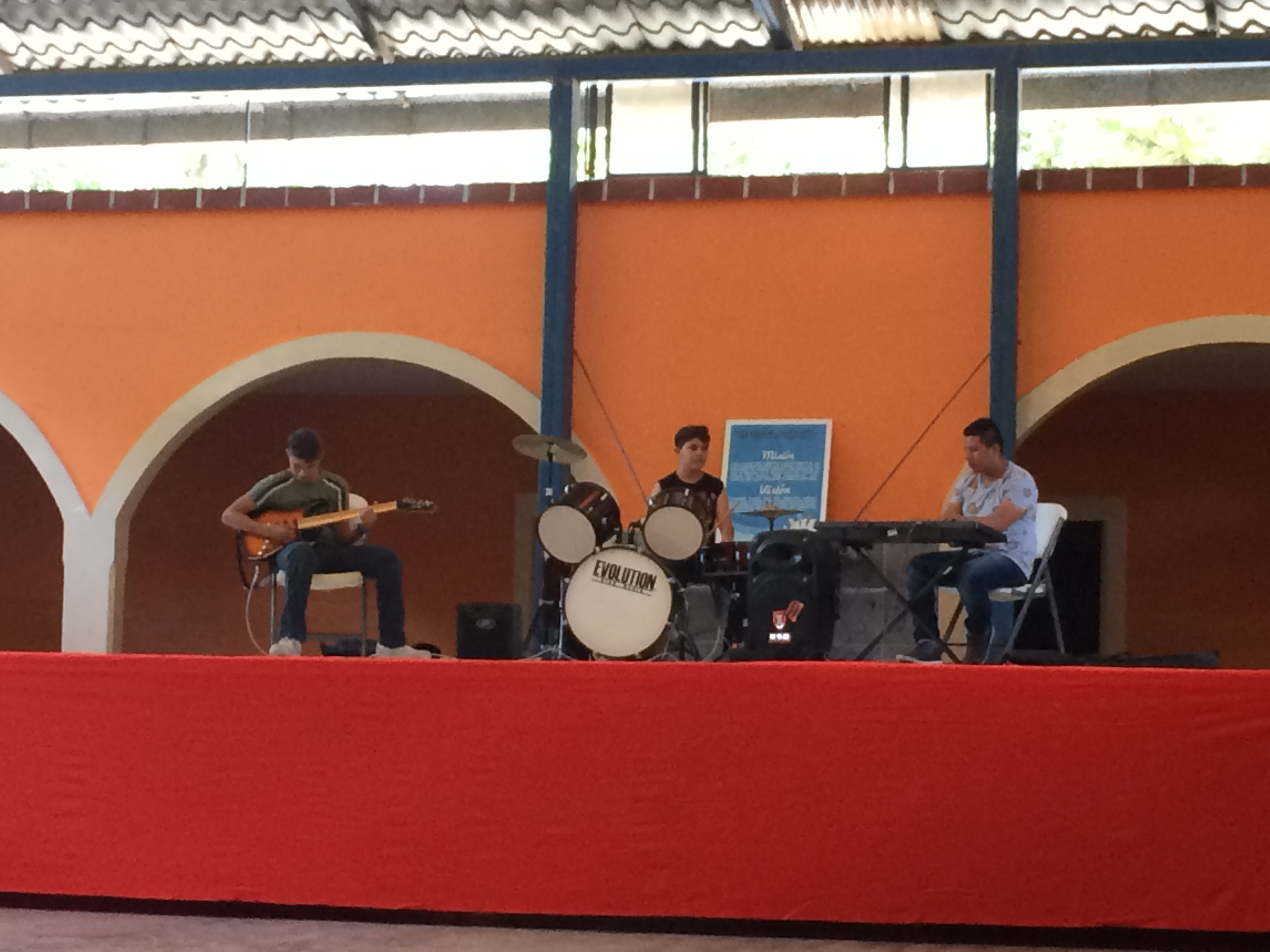Hogar means home. Infantil means children. Hogar Infantil is a children’s home with an excellent record of success. It is not really an orphanage, as many of the children have family elsewhere. But it is a place where they are safe, cared for, fed and can form a community that feels like family. Without exception, these children come from degrees of poverty that my readers can barely imagine. But in this setting they are given food, shelter, healthcare and their needs are met. Moreover they are supported through the educational process and can go as far academically as they wish, with the financial and community support of Hogar Infantil.

At this point you are asking me, “Why are you writing about this place? What does it have to do with your travels?” I would be asking the same things. And I will try to answer this within this post as I share the story of our visit to Hogar Infantil. 
Perhaps it was due to our lifetime in education fields, or maybe because of our work at the therapeutic boarding schools in Mexico and Costa Rica. Whatever the cause, we chose to stop at this facility. We first read about it on iOverlander (insert app link), which we use daily for our route planning, overnight options and other resources it provides. When we saw that Hogar Infantil offers FREE overnight camping we were intrigued, as we read the description we were compelled. So, lets begin with that…
Hogar Infantil is a free camping location in the state of Chiapas, Mexico. It is located just west of the state capital, Tuxtla. It is on the outskirts of the town of Ocozocoautla. Click here for a link to their map and website. The campsites are four concrete pads in a grassy field with huge shade trees. Occasionally the water and electricity works to those sites. There is a rough bathroom nearby with a toilet, sink and shower, which occasionally has running water. And for travelers who truly need electric, water or showers they can arrange for those in another building. So, the lodging is rough, but it makes up for it in other amenities. 
After reading the description we were hesitant, thinking that we would be mobbed by hungry children with outstretched hands and pleading eyes. We imagined that we would feel guilty for not sharing our food, our clothing and our resources. Popular literature leads us to believe that orphanages are filled with sadness, despair and hunger. But this place is pleasantly far from any of those images! There were no expectations at all. We could have parked, spent the night and never interacted at all, but that is not our style!

Hogar Infantil has been in operation at this location for 50 years. The weekend after our visit they would be holding a huge fiesta for over 300 visitors as they celebrated this milestone. A special program was planned with dancing, musical groups and presentations. Hundreds of former residents would be returning with their new families to share in the celebration and to thank the program for giving them an opportunity to be successful. It was exciting to watch the preparation as the current residents became excited for the upcoming festivities. 
The fiscal and management structure here is interesting and works well for the needs of the children. The funding structure is a not-for-profit, 501c3, led by a volunteer board of directors in the USA. Additionally there is a volunteer board of directors in Mexico who assist with on-site decision-making. Interesting note, most of the Mexican board members grew up at the home and desire to give back and support it as adults. They now have careers and families and are proud to support their past in this volunteer work. 
While all of the actual money comes from American sources, there is some support through Mexican social welfare programs. DIF provides government food subsidies (such as dried beans, powdered milk, corn meal and cheese) that help out with feeding the 80+ residents their three meals per day. But funding for this facility takes place through grassroots efforts in America. Church groups, fundraising, grant writing and private donations are the sources utilized to maintain the operations and provide for the needs of the students. This includes their academic costs, which I will discuss later.

Donations of money are NOT accepted on site, and can be made through the website at www.hogarinfantil.org (add link). However, visitors are welcome to bring treats such as cookies or ice cream (enough for 80+ children) and donations of soccer balls, sturdy toys, clothing, school supplies or other practical needs are always welcome. But please understand that nothing is requested or expected during your visit. These children are living comfortably and their happiness demonstrates that peace. 
The daily routine at Hogar Infantil is a family style structure. Children live in groups by age and gender with an assigned house parent called Tio (uncle) or Tia (aunt). All children come together for breakfast and then they are bused to a school appropriate for their age group. Children are expected to maintain good grades and are supported in their academics with tutors as needed. If grades fall below passing, or behavior becomes an issue the students are warned and if it continues the local board members intervene. If the student has family members elsewhere, they are informed of the situation. Generally these actions are enough to encourage the student to succeed. 
Attending school can be expensive in Mexico, and having the opportunity to attend school is something these children may have missed at their former homes. Every school requires a particular uniform. Some schools have additional attendance fees and students, not the school, provide school supplies. The agency makes sure that every student has all the items they need to attend school. Additionally, as students move on to secondary and post secondary schools, Hogar Infantil will assist with tuition, uniforms, computers, transportation and even lodging if needed. Many residents have graduated from universities with the support of this group. 
After school everyone participates in chores. The farm has many animals and gardens to be tended. They also do laundry, clean, yard work, cleaning and maintenance. Some students attend volunteer off-site, attend English classes, counseling sessions, Bible study or other appointments during this time. And after the work is done, there is plenty of free time to enjoy the playground, weight room, soccer field or relax and watch a movie. Then in the early evening they all come together again for dinner in the dining hall. After dinner everyone showers and cleans their rooms before an early bedtime. The schedules are well planned and quite necessary with a group this size. 
The dorms of Hogar Infantil are large, open spaces where each student has a personal area. A bed, a dresser, a few personal items and clothes/shoes are neatly organized in each child’s personal area. 
 Attached to the large bedroom areas are bathroom spaces with toilets, sinks and showers. I am sorry to say that these were in need of repair (plugged toilets, broken doors, leaking pipes, missing handles) but they were spotlessly clean and free of odor. Each house also has a large closet area that holds copious amounts of donated clothing and shoes in a range of sizes. Children know that if they need new clothing, it is available to them. In the young boys house area I saw comfortable couches and a large television in their “living room” area. The young girls dorm did not have the same sort of area. It really didn’t have much furniture at all.
Attached to the large bedroom areas are bathroom spaces with toilets, sinks and showers. I am sorry to say that these were in need of repair (plugged toilets, broken doors, leaking pipes, missing handles) but they were spotlessly clean and free of odor. Each house also has a large closet area that holds copious amounts of donated clothing and shoes in a range of sizes. Children know that if they need new clothing, it is available to them. In the young boys house area I saw comfortable couches and a large television in their “living room” area. The young girls dorm did not have the same sort of area. It really didn’t have much furniture at all.  Each dorm also has a room near the entrance that houses the house parents. They have a large, comfortable space with a door and a private bathroom. The teenagers are offered double, apartment style rooms that include two beds, dressers and chairs with an attached bathroom space. These rooms are also available for guest use. The division by sex and age makes sense in this setting, yet the communal living still feels like family to the children.
Each dorm also has a room near the entrance that houses the house parents. They have a large, comfortable space with a door and a private bathroom. The teenagers are offered double, apartment style rooms that include two beds, dressers and chairs with an attached bathroom space. These rooms are also available for guest use. The division by sex and age makes sense in this setting, yet the communal living still feels like family to the children. 
All of children live there full-time, except those attending a university. The children are allowed to have family members visit. Most do not have parents, but they have aunts, uncles, cousins, grandparents and some have older brothers and sisters. These family members come to visit when they can afford it. And some children go to visit their family for one or two months each summer. Being offered the opportunity to live here comes differently in every case. Sometimes the family hears about it through word-of-mouth when they are experiencing a hardship. Many of the residents come from physical abuse, alcohol and drug problems and sometimes DIF (family services) referrals. All students agree to be there, and their remaining family agrees that they will stay. No students are held against their will at this beautiful place. There are no gates and no locks! But in every situation, it is better for them here at Hogar Infantil than where they were.
Celebrations are important at Hogar Infantil. We had the good fortune to witness the rehearsal for the 50-year anniversary party. We saw dancing and music practices. Most of the students also gathered to watch. And everyone had a role in the event. But other events are also celebrated with their new family. Graduations from kindergarten through high school are treated with great importance due to the emphasis on education. And the annual quinceanera is a special event for any girl that turns 15 in that year. This celebration includes music, food, dancing and lavish dresses just as any quinceanera would. 
I hope that our visit to Hogar Infantil has provided you a glimpse into the life at a Mexican orphanage type setting. I know it was an eye-opener to us. And we will continue to encourage travelers to stop there if they are passing through this region of Chiapas, Mexico. If we pass back by that direction, we will try to pick up soccer balls, sturdy plastic toys and school supplies to deliver. And we will be making a monthly financial gift to Hogar Infantil. This post will be shared with the board members and we hope others will share the link and the story. With a strong history of success and a continuing need for support, this is a worthy cause.
If you would like more information about Hogar Infantil, please visit one of these links. Facebook page for Hogar Infantil or Website of Hogar Infantil or Older but interesting video and if you find yourself in Chiapas please take the time to stop by for a visit. Remember that your visit comes with no obligation and no expectations. But if you let it, this place will touch your heart!

Thank you for making us aware of this place. We would like to add it to our list of places to visit next year on our trip. Please keep posting, the world needs more of ya!
I’ve heard about these orphanages from a friend who’s family helps run one in Guatemala. I’m surprised by how important these places have become for young people of all origins. I recently learned that many have parents who are simply incapable of supporting them. I’m glad you stopped here and brought attention this important cause. I hope you continue to have safe travels. – Tobias